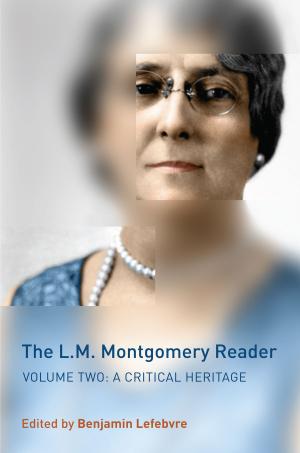The Nibelungenlied
A Literary Analysis
Fiction & Literature, Literary Theory & Criticism, European, German, Medieval, Poetry History & Criticism| Author: | Hugo Bekker | ISBN: | 9781442633483 |
| Publisher: | University of Toronto Press, Scholarly Publishing Division | Publication: | December 15, 1971 |
| Imprint: | Language: | English |
| Author: | Hugo Bekker |
| ISBN: | 9781442633483 |
| Publisher: | University of Toronto Press, Scholarly Publishing Division |
| Publication: | December 15, 1971 |
| Imprint: | |
| Language: | English |
In the last fifty or so years there has been a gradual shift of attention in scholarship on the Nibelungenlied from reconstruction of the texts, and tracings of the poem’s multiple and complex antecedents, to interpretation. In spite of this trend, there is still a pressing need for a critical analysis of the Nibelungenlied as a whole that draws together its various literary qualities and examines in detail the epic’s unity, depth, and meaning. Professor Bekker’s study provides this kind of analysis. It takes a fresh approach, viewing the poem as a work of literary merit worthy to be read for its own sake. It traces the new designs which the poet brings to the Nibelungen tradition and provides detailed examinations of the main aspects of technique and structure in the epic. The approach is based on close consultation of the text, with little digression, in an attempt to guide the reader to an understanding and appreciation of the poem as the author intended it to be read.
Professor Bekker points out that the poet of the Nibelungenlied does not aim at psychological character delineation and deliberately refrains from seeking to establish the various prominent figures in the epic as individuals in the modern sense of the term. Instead, they emerge as representative figures whose interrelationships, though interesting, are less important for the unity and meaning of the epic than are their common relationships to the world in which they exist. The question of personal guilt or innocence becomes irrelevant, and Professor Bekker sees the work ultimately as poetic pageant of a noble way of life and its destruction. Symbolism, imagery, parallelism, symmetry, and other structural devices all contribute to the design which expresses the nature of this noble life, and Professor Bekker’s book is a valuable guide to the complex architecture of this thirteenth-century masterpiece.
In the last fifty or so years there has been a gradual shift of attention in scholarship on the Nibelungenlied from reconstruction of the texts, and tracings of the poem’s multiple and complex antecedents, to interpretation. In spite of this trend, there is still a pressing need for a critical analysis of the Nibelungenlied as a whole that draws together its various literary qualities and examines in detail the epic’s unity, depth, and meaning. Professor Bekker’s study provides this kind of analysis. It takes a fresh approach, viewing the poem as a work of literary merit worthy to be read for its own sake. It traces the new designs which the poet brings to the Nibelungen tradition and provides detailed examinations of the main aspects of technique and structure in the epic. The approach is based on close consultation of the text, with little digression, in an attempt to guide the reader to an understanding and appreciation of the poem as the author intended it to be read.
Professor Bekker points out that the poet of the Nibelungenlied does not aim at psychological character delineation and deliberately refrains from seeking to establish the various prominent figures in the epic as individuals in the modern sense of the term. Instead, they emerge as representative figures whose interrelationships, though interesting, are less important for the unity and meaning of the epic than are their common relationships to the world in which they exist. The question of personal guilt or innocence becomes irrelevant, and Professor Bekker sees the work ultimately as poetic pageant of a noble way of life and its destruction. Symbolism, imagery, parallelism, symmetry, and other structural devices all contribute to the design which expresses the nature of this noble life, and Professor Bekker’s book is a valuable guide to the complex architecture of this thirteenth-century masterpiece.















